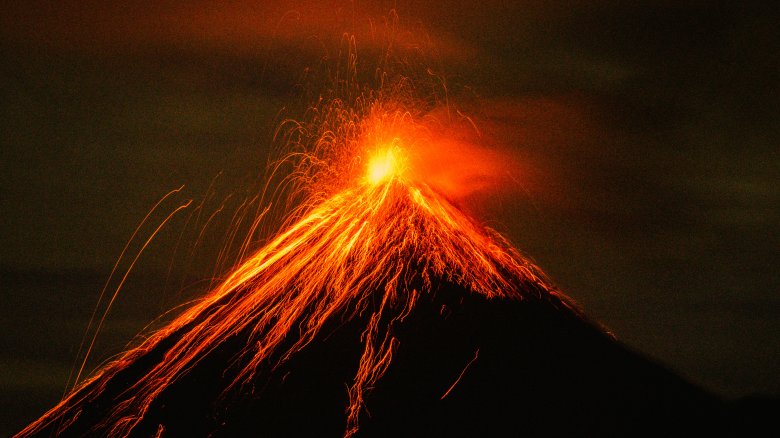What's The Difference Between Magma And Lava?
Admit it: you've obviously heard of both "magma" and "lava" when it comes to that hot stuff you saw at the end of Lord of the Rings. You know it's spicy enough to melt evil rings that can inexplicably conquer Middle Earth through the power of invisibility. But if you're being honest, you might not be clear on the difference between the two terms. Well, good news Frodo: we're here to keep you from embarrassing yourself in front of all them elves.
First, a quick geography lesson, courtesy of National Geographic. If you cut through the Earth's outer crust to its core, you'll hit four distinct layers. The outermost layer is called the crust. This is the chunky assortment of minerals and rock we inhabit and interact with. Beneath the crust you'll hit mantle. Here, the rock flows like tar, heated to over-microwaved pop-tart levels of molten deadliness by the pressure of the crust bearing down on it. Dig deeper and you hit the outer core. A shell of liquid iron, sulfur, and nickel flows here, blazing away at a toasty 9,000 degrees Fahrenheit. Then you hit the core: a solid ball of pure, white hot, non-liquid iron — this hellish stuff is almost as hot as the surface of the sun.
Circling back to the question at hand, magma and lava both refer to the same substance. Both are made of super-heated molten rock. This slow-flowing substance forms under intense pressure and heat, where crust begins to give way to mantle. According to ZME Science, molten rock is a complex mixture, and may contain minerals, suspended crystals, and a variety of gases. Accumulating in subterranean chambers, this underground molten rock is known as magma.
When less dense rocks rest above it, magma can slowly ooze to the surface. Usually it will cool and solidify, but in some circumstances, it'll continue to rise and accumulate in molten form much closer to the surface. As pressure slowly builds, this pool of deadly rock juice may eventually erupt, creating the death-fountain of hot, mineralized doom we all know and love: a volcano. At the point of eruption — when molten rock reaches our planet's surface — it officially becomes lava.
Now, just to make these molten matters more complicated, there are in fact three kinds of lava. A'a is basaltic lava which flows slowly, and dries into razor sharp jagged spikes. Pahoehoe is thinner, dries very smooth, and can flow with deadly speed down mountains and slopes. Pillow lava is underwater lava, and it erupts in blob-like pillows, hardening the moment it comes into contact with water. Lava can reach the surface in any part of the world — from Antarctica to Yellowstone National Park.
Summed up neatly, magma is underground molten rock. Lava is molten rock that has reached the Earth's surface. Both are as hot as dickens, and splashing about in the stuff should be strictly discouraged.
